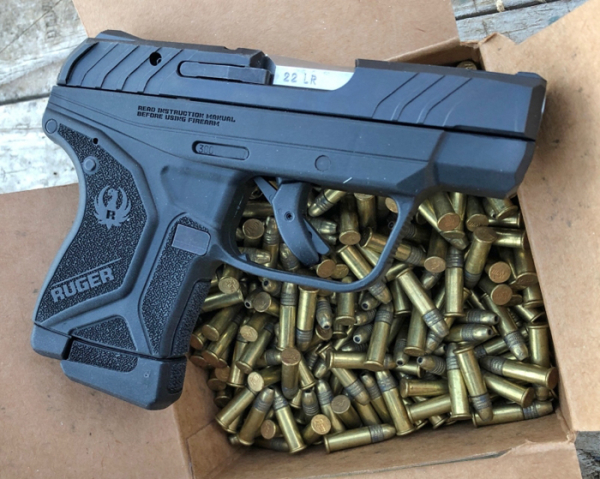
Broadening the appeal of readily available firearms is smart business these days. We’re getting more new shooters and cutting into the population of people who may start out recoil/muzzle-blast shy, people who have diminished physical capacity and people who would just like to shoot a lot. Manufacturers have heard the call – and Ruger’s no exception.
They jumped on making the current iteration of their “Lightweight Compact Pistol” – Version II – into the Lite Rack LCP II, chambered in 22 Long Rifle. Sounds like it’d be easy to turn the previously issued 380 ACP LCP II into a 22 . . . but that would be wrong thinking. The gun has the “Lite Rack” moniker because it is easy to manipulate. It’s like other LCPs – and it’s not. The open top slide, integral sights and internal hammer – visible when cocked – is similar. Like the other LCP II model in 380, the slide will lock open on the (current 380) magazine. It’s single action, unlike the first LCP versions. It weighs in at 11.2 oz. and has a 2.75” barrel.
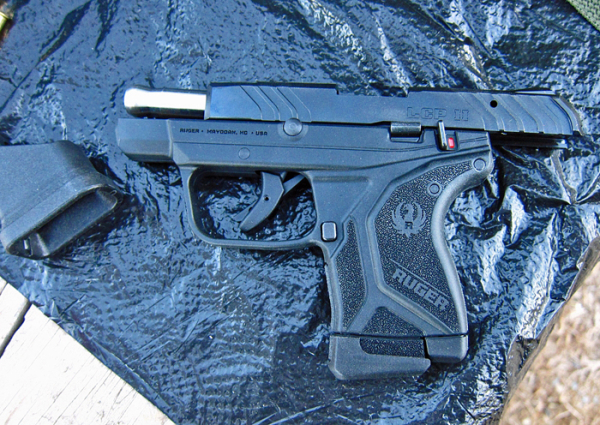
With this model, there’s a manual safety. Simple to get off of “safe” – pushing the safety in the direction you need the projectiles to go – it’s not easy to “accidentally” apply. The manual safety can only be applied when the pistol is cocked. It disconnects the trigger from the hammer. The safety, when applied, blocks the hammer as well, preventing contact with the firing pin.
Also, there’s a magazine disconnect feature on the rimfire gun. It’s not a “safety” as it won’t prevent firing when an empty (or loaded) magazine is installed. And it’s no substitute for locking the slide open and visually/physically inspecting the chamber to check the condition.
It takes down in similar fashion to the centerfire version – but it’s a blowback design. The rimfire magazines are not interchangeable with other LCP magazines. The factory doesn’t recommend sub-sonic or “match grade” 22 LR; the round must have sufficient energy to run the slide.
Regarding dry practice, the factory-supplied manual (correctly) notes that “Going through the actions of cocking, aiming and pulling the trigger (sic) on an unloaded firearm . . . can be useful to learn the “feel” . . .” of the pistol. As Rule 1 notes, “All guns are always loaded.”
So rigorous inspection of the piece and having a “safe direction” to aim in at – that being something that can safely absorb projectiles without passing through and striking someone – is critical. Historically, dry practice with rimfire guns lead to damage to chamber or firing pin, as the firing pin has to crush the rim of the cartridge to allow ignition. Apparently Ruger’s found a way around that. “The Ruger LCP II with manual safety can be dry-fired (sic) without damage to the firing pin or other components as long as the magazine is inserted.” (Page 17)
It should go without saying – but it doesn’t –- that the magazine must be clear and free from ammunition and there must be no ammunition in the room when you dry practice.
You do not need to press the trigger to disassemble the gun for maintenance.
Disassembly is simple. Remove the magazine, lock the slide open, check the chamber by sight. Use a light as it’s hard to get a digit in there to check the chamber “by feel.”
Allow the slide to go forward. Using a small, flatblade screwdriver, remove the takedown pin from the left side of the receiver (above the trigger). After it’s removed, move the slide forward off of the frame.
The recoil spring isn’t captive. As you compress the spring to dislodge the recoil spring guide from the barrel lug, be mindful to keep the assembly under control, lest it fly away. The manual reminds us to replace the takedown pin into the frame at an angle, to push down the retaining spring. Rotate it until it aligns with the travel way and press it in.
Function checking requires the magazine be available – so ensure no ammo is in the magazine or in the cleaning area.
Range trips occurred in the January of the Plains. The first trip was early, just after daybreak, and around 24?F. I shot the gun with CCI “Clean-22” 40 grain and Remington Golden Bullet 36 gr. HP. I noted that the gun prints high at fifteen yards. On a B-8, I held center of the bull. The impacts were high, favored left, in a vertical string. Improved the frame is for getting a solid grip, but it’s still small. I had one fail to fire with Clean-22. It was tried again in another gun, a dead round.
At 10 yards, I was able to stay in the bull with Remington Golden Bullet, holding at six o’clock. There were no stoppages except the ammo-related failure to fire. The gun was packaged with a pocket holster, mag loader and one magazine. Why a magazine loader? -- The top of the magazine, feed lips, are sharp.
As small as it is, there was no appreciable recoil. I noted some muzzle flash in the early morning gray.
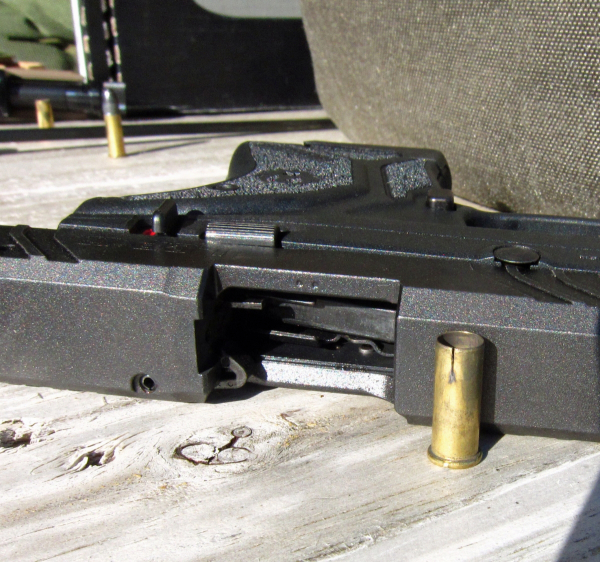
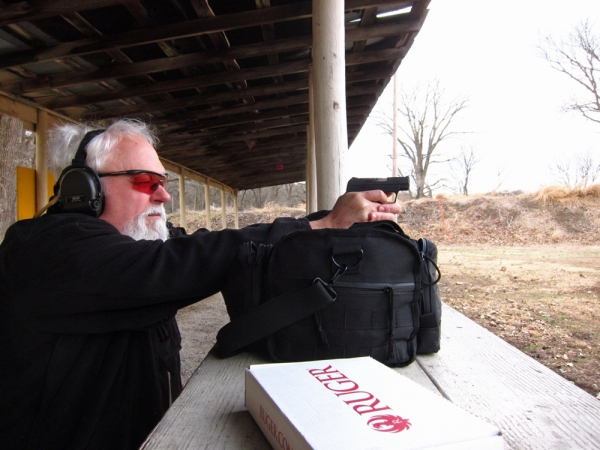
I later took the gun to a shooting exercise with a current law enforcement practitioner. We had one stoppage – a show stopper in which the fired case failed to extract. Using a 22 caliber cleaning rod to clear the empty out showed why: the case was split from the case mouth down nearly a third of the way toward the case head. In all my years of shooting 22 rimfire, I can’t recall ever seeing a split case mouth. It was (a very old box of) Remington Thunderbolt. It was not of recent vintage. Interestingly, the remainder of the box fired through the LCP II with no stoppages.
On the latest trip, it was accuracy testing time. It was windy and unseasonably warm (50 degrees). During the event, I encountered a few failures to fire. Putting the offending rounds in another gun resulted in only one of them firing – indicating it was ammo, not the LCP II. There was a single failure to lock open on an empty magazine, which I believe was operator error. I found the LCP II to be capable of shooting into 3-inches at 25 yards – from a seated rest, not off-hand.
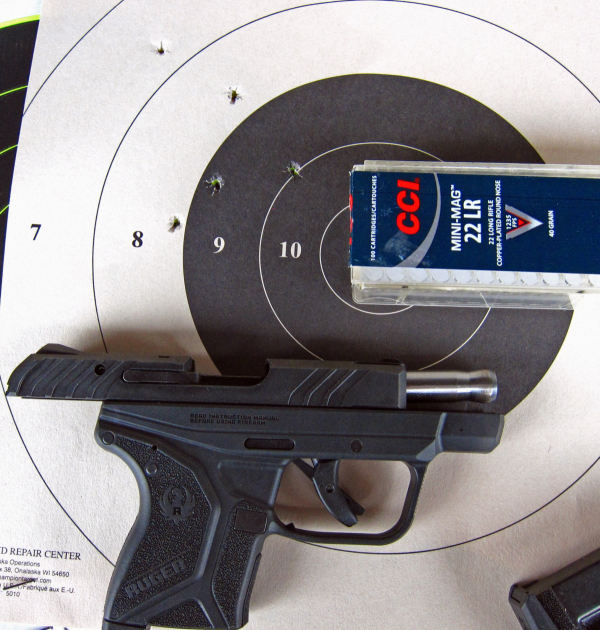
The CCI Mini-Mag 40 grain solid put five rounds into just over 2 ½”, with three of them crowding into 1 7/8”. I consider that a fluke, but I’m not complaining. Usually, I’d get six-inch five shot groups with a flyer. Cutting out the flyer, put me with four rounds into 3 inches or so. CCI Stinger put the best three of five rounds fired into 3 ½” while Winchester Super-X put three into two inches.
For this small a gun, short sight radius and not a lot of pistol to grip, that’s really good shooting. The price isn’t bad either, with a suggested retail of only $349.00.
- - Rich Grassi